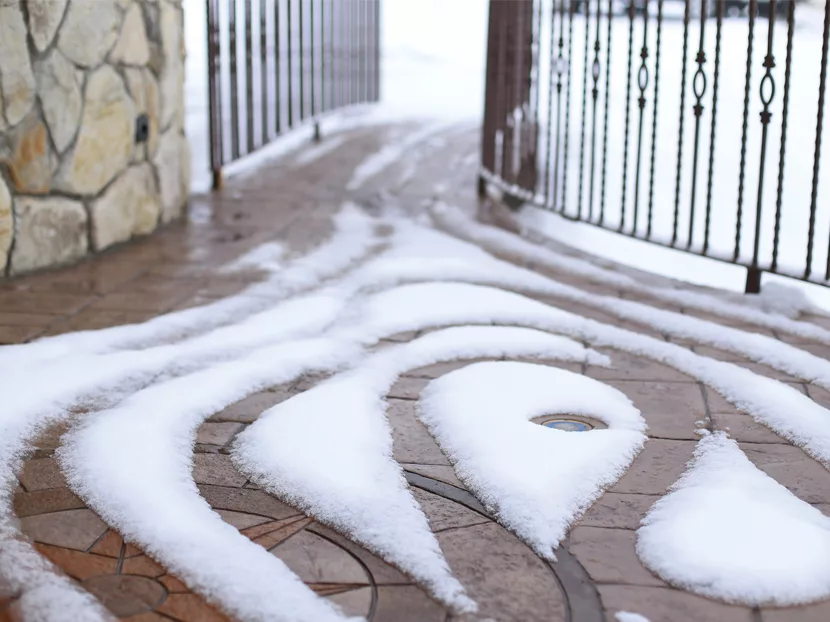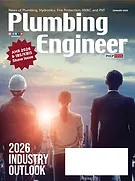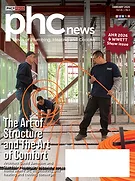There’s a saying I like to use when it comes to designing systems: “Engineering is the art of best guess.”
This seems a bit contradictory. Engineering to most is the art of absolutes, the science of definitive measures. When building a skyscraper, one would hope the science behind the engineering would be pretty exact. The reality is that engineering is an art form that takes a known condition and makes it repeatable.
A steel beam bent breaks eventually. We bend enough beams, we begin to create a method to predict when that beam fails. This is engineering. But what happens when the conditions we are trying to predict are constantly changing?
This is where the art of the best guess comes in. Nothing fits this philosophy better than when trying to design a snowmelt system.
The Art of Constant Change
The only thing constant in this world is change. Mother Nature is fond of showing us this on a daily basis. Meteorologists are all too familiar with how hard it is to try and predict what the weather will bring. This ever-changing element is one of the factors behind the guess.
When an engineer sets out to design a snowmelt system, one of the first things they do is look at the weather data for a given area. How cold does it get? How much snow usually falls? What’s the density of this snow? What was the largest snowfall possible?
The data he finds will make a Jackson Pollock painting look organized. He’s the guy who, back in the ’40s and ’50s, splashed oil paint all over giant canvases. This was all to the adoring praise of art critics worldwide. I’m guessing it’s not the sort of art that many engineers take a shine to.
Because Mother Nature rarely plays by any single set of rules, it has become necessary for designers of snowmelt systems to be, shall we say, creative in their approach.
When designing a heating system, the conditions are pretty straightforward.
Consider the coldest day of the year, evaluate the construction profile and perform the necessary calculations. Very little changes.
It is not the case with a snowmelt design. One of the most common variables to contend with, as illustrated earlier in the chart of data provided by NOAA and the National Weather Service, is the actual amount of snow that will fall. Snowfall amounts can range from a few inches to a few feet in any given area but not for every event.
So, how are these swings in snowfalls managed? Well, with what’s referred to as a confidence factor. Historical data allows us to get a fairly good feeling of what a typical snowfall amount is with the periodic five-year, 10-year and 100-year oddity. The confidence level, set between 75 percent to 100 percent, indicates how confident the designed level of snowfall will occur.
For example, if the snowfall amount set by ASHRAE for a given area is 12 inches but we know it is a five-year event, we may design for a 90 percent confidence.
Counter to this, if we feel the 12-inch snowfall happens pretty regularly, then we may bump this to 98 percent or even 100 percent. The higher the confidence level, the higher the calculated load.
Performance Variables
For the sake of easy reference, snowmelts are grouped into classifications. These allow designers to quantify the level of snowmelting a system is designed to perform. There are two essential systems of classification: old ASHRAE and new ASHRAE. ASHRAE categorizes snowmelt systems into three main groups: Class 0, 0.5 and 1.
These refer to the amount of snow which will accumulate during the melting process. A Class 0 will generally allow for full accumulation before melting while a Class 1.0 will try to stay up with the rate of snowfall, providing a completely snow-free area all the time. Performance needs generally drive the classification. Residential will be either a Class 0 or 0.5. Light commercial will generally be a Class 0.5 while areas deemed critical, such as hospitals or loading docks, will be a Class 1.0.
Let’s now assume the design is complete and the engineer made his best guess. What now? How does reality stack up to the guess?
In truth, pretty well. Even though we’ve identified a wide range of unpredictable variables, snowmelt systems generally perform as desired. So, what changes from snowfall to snowfall?
One of the design factors not discussed thus far is time. When we design a system, we base the calculated loads on a certain amount of snowfall in a given period. Likewise, we calculate the melting process over a given amount of time. For simplicity, let’s assume one hour.
For a snowfall amount of 12 inches in 24 hours, we would have a snowfall average of 1/2 inch per hour. Even though, in reality, it can be anywhere between 1/4 inch to 2 inches an hour. The calculations are based on what it would take to melt that snowfall in one hour. Let’s say the calculated load is 100 BTU/hr. As the rate of snowfall varies, our BTU delivered does not. So, what changes?
Time changes. If the rate of snowfall is the designed 1/2 inch, the 100 BTUs of delivered energy will melt the snow in an hour. If the snowfall rate is less, the melting takes place faster. If the snowfall rate is greater, the melting will take place over a slightly longer period of time.
In this example, if the rate were 3/4 inch of snow, it may take the system 1 1/2 hours to melt instead of the designed 1 hour. The system still works and the snow is still removed. These variations are generally not even noticed as long as we achieve the objective of a clear driveway, ramp or walkway.
Controls Make the Difference
Control strategies go a long way in reducing the time factor even more. With today’s smart controls, such as tekmar’s latest snowmelt control, melt time is reduced by allowing the system to start before the snow falls.
The Wi-Fi Snow Melting Control 670 includes a smart feature that checks the local weather forecast based upon a ZIP code and then anticipates snowfalls by preheating the slab in advance of a snowfall. This smart feature virtually eliminates the risk of snow accumulation on the slab while also significantly reducing energy costs, compared to snowmelt systems that preheat continuously throughout the winter season.
Every year, we gain a little more understanding of how snowmelt systems perform and how Mother Nature behaves. With each season, we get a few more points to add to our graph, allowing for our guesses to be a bit more accurate.
Kolyn Marshall is a system engineering manager with Watts who specializes in developing integrated system designs.





